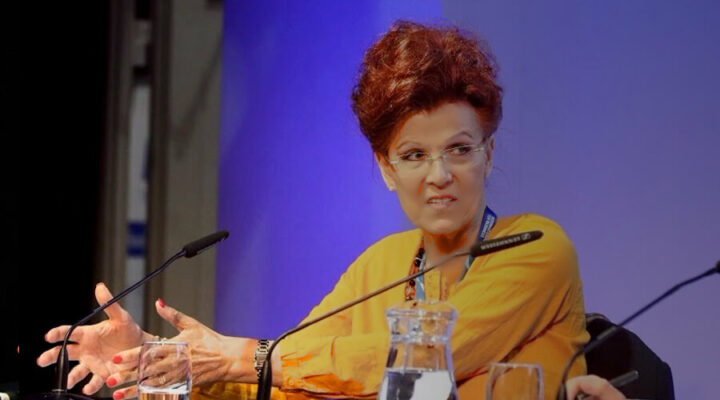Given your extensive experience with global giants like IBM, Oracle, and Siemens, how can executives effectively navigate the complexities of strategic agility in their organisations today?
Strategic agility is about balancing the need for flexibility with the discipline of execution. Companies like IBM and Oracle have thrived by constantly evolving their strategies to align with market changes while maintaining a solid operational backbone. For example, the shift from hardware to services and cloud-centric open-source models at IBM exemplified strategic agility. The transformation from a profit-maximising system into a purpose-driven IBM. Kyndryl is another example of how IBM has created a purposeful business in an agile way. Executives must foster an organisational culture that is both adaptive and resilient. This involves not just reacting to changes but anticipating them. The forthcoming TEXEM programme in Liverpool will delve into these dynamics, helping leaders master the art of strategic foresight and lead their organisations through uncertainty with confidence and clarity.
Can you provide an example of a company that successfully implemented radical change, and what lessons can executives learn from this?
A notable example is ING Bank, which transformed significantly to embrace a more customer-centric and digitally driven approach. This involved overhauling their operational models and flattening their organisational structure. The lesson here is the importance of a clear vision and the courage to dismantle existing paradigms. Leaders must understand that radical change often requires learning and letting go of legacy systems and mindsets that no longer serve the organisation’s future. Running the banking business and changing it requires agile leadership. It involves a hyper-awareness of the foreseeable strategic business changes with the current and desired business portfolios and IT risk profiles. During the TEXEM programme, we will explore such case studies, equipping executives with the insights needed to initiate and sustain transformative changes within their organisations.
Why is mastering change management critical for today’s leaders, and how does TEXEM’s methodology support this?
In today’s challenging environment, the ability to manage change is no longer optional; it is a critical leadership competency. Effective change management involves not only planning and execution but also managing the human dimension of change, such as resistance and morale. About half of the work in leadership is transformative, institutional transformation, creating leader-follower relations, renewing institutional vision, societal engagement, effective communication, and performance. A quarter of the work is building bridges, providing salvation in hopeless situations, and gaining the trust of stakeholders through humility and authenticity to realise the interest of those they serve. The remainder of agile leadership is an agency that leads advocacy for ethical and social advancement for the well-being of wider society. It is transformational, empowering individuals to make meaningful contributions by exploring and questioning current reality. TEXEM’s methodology is unique in that it combines rigorous academic insights with practical, real-world applications. This approach makes learning engaging and memorable, ensuring that participants are passive recipients of knowledge and active contributors to their development. The interactive sessions, such as panel discussions and Kahoot games, reinforce learning, making it easier for leaders to apply these lessons in their own contexts.
Could you elaborate on the role of leadership in fostering strategic agility and provide an example of this in practice?
Leadership is pivotal in fostering an environment where strategic agility can flourish. This involves setting a sharp vision, empowering teams, and creating a culture that embraces continuous learning and adaptation.
Good examples are Oracle Corporation and Philips International, which navigated several product-market shifts by empowering its product management leaders to make decisions aligned with the company’s broader strategic innovation and change objectives. At the end of the last century, both companies had an adaptation strategy that pushed more decision-making authority out to countries and regions. National sales representatives were deciding each year next year’s sales product portfolios. Their selection of products was mainly a listing of current cash cows. Innovative products from the headquarters product groups were hardly selected.
At the end of the last century, both companies completed a 90-degree transformative change by empowering their product management at headquarters with P&L control over sales, changing the strategy from adaptive to aggregation. The boards of Oracle and Philips were instrumental in pivoting towards more profitable business segments when traditional markets declined. The TEXEM programme will examine how leadership behaviours influence organisational agility, providing executives with actionable strategies to enhance their leadership impact.
What challenges have you seen executives face when implementing systemic change, and how can they overcome them?
One of the most significant challenges is overcoming internal resistance and breaking down silos that hinder communication and collaboration. For example, Royal KPN faced these issues when it moved from a traditional telecommunications company to a bank and digital service provider in the banking sector. Overcoming these challenges required strong leadership, clear communication, and a relentless focus on strategic agility objectives. Executives attending the TEXEM programme will benefit from discussions on managing these challenges, learning from the successes and failures of others, and acquiring the tools needed to drive systemic change effectively.
How does your global experience across multiple cultures and industries inform your teaching, particularly in programmes like TEXEM?
My global experience has taught me that while the principles of leadership and strategy may be universal, their application is often context-specific. This is particularly true in multinational settings where cultural nuances can significantly impact decision-making and implementation. Working across diverse industries and geographies, from the industrial sector with Philips to financial services with ING Bank and autonomous navigation systems at the Port of Rotterdam, has shown me the importance of adaptability and cultural intelligence. At TEXEM, we incorporate these insights into the curriculum, ensuring that participants can apply the principles of strategic agility and change management in ways relevant to their unique environments.
Why should executives invest their time in the forthcoming TEXEM programme in Liverpool, and what can they expect to gain?
Executives should consider the TEXEM programme because it offers a rare blend of academic rigour, practical insights, and interactive learning. The programme is designed to inform and transform, equipping leaders with the tools and frameworks they need to navigate today’s complex business environment. Through a carefully crafted agenda that includes strategic discussions, real-world case studies, and engaging activities, participants will leave with actionable strategies to drive sustainable success in their organisations. Furthermore, the opportunity to network with peers and learn from experienced leaders like me adds immense value, making this programme a must-attend for any executive committed to mastering the challenges of change. For more information, please visit here.





